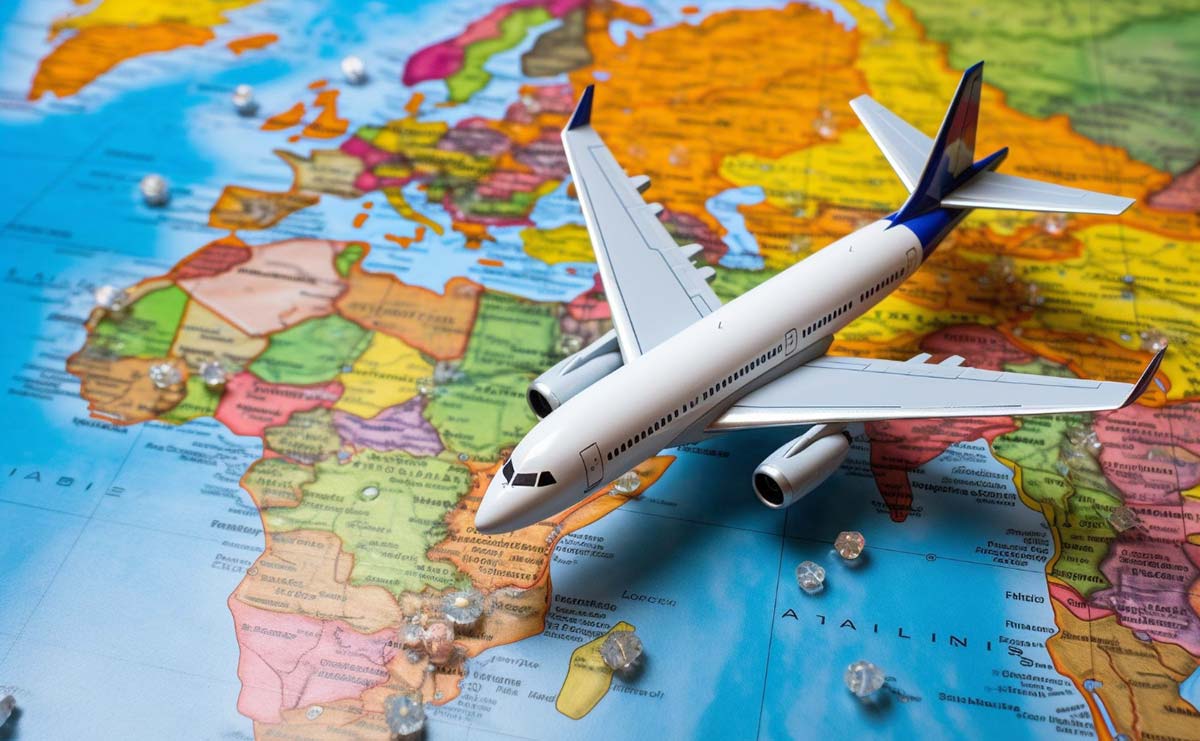Contents
Navigating the Legal Complexities of International Flights: Jurisdiction and Regulations
Navigating the legal landscape of international flights involves understanding a complex network of national laws, international treaties, and regulations established by global aviation organizations. These flights, which traverse multiple countries, are subject to a diverse set of rules designed to ensure safety, security, and operational efficiency. Passengers and airlines alike must comply with the customs, immigration, and quarantine laws of both departure and destination countries. Jurisdiction over these flights can depend on various factors such as the country of aircraft registration, territorial airspace, and specific international agreements. This article delves into the intricate legal frameworks governing international flights, shedding light on the multifaceted regulations and standards that sustain the global aviation system.
What Are International Flights?
International flights are air travel routes that involve flying from one country to another, crossing international borders. These flights are governed by a complex set of regulations and agreements between countries to ensure safety, security, and efficient operations. Passengers on international flights are subject to the customs, immigration, and quarantine laws of both the departure and destination countries.
Airlines operating international flights must comply with various international aviation laws, treaties, and standards set by organizations such as the International Civil Aviation Organization (ICAO). These regulations cover aspects such as air traffic control, safety protocols, passenger rights, and environmental standards.
Moreover, international flights often involve considerations of time zone changes, different airport security procedures, and the need for valid travel documents such as passports and visas. The logistics of international flights also include coordinating with multiple aviation authorities, managing long-haul flight operations, and catering to diverse passenger needs.
Who Has Jurisdiction on International Flights?
Jurisdiction on international flights is determined by several factors, including the location of the aircraft, the country of registration, and international agreements. Here is an overview:
Country of Registration: The country in which the aircraft is registered generally has primary jurisdiction over the aircraft. This means that the laws of the aircraft’s country of registration apply on board, regardless of where the aircraft is flying. For example, if a plane is registered in the United States, U.S. law applies to activities on the aircraft.
Territorial Jurisdiction: When an aircraft is within the airspace of a particular country, that country has jurisdiction over it. This includes the airspace above its territorial waters. For instance, if an aircraft is flying over French airspace, French law applies.
International Waters: In international airspace (airspace not within any country’s territorial boundaries), the jurisdiction typically reverts to the country of registration of the aircraft.
International Treaties: International agreements, such as the Tokyo Convention of 1963, provide guidelines for jurisdiction over offenses and other acts committed on board aircraft. The Tokyo Convention allows the state of registration of the aircraft to exercise jurisdiction and also permits intervention by the authorities of the country where the aircraft lands if necessary.
Criminal Jurisdiction: Criminal acts committed on board an aircraft are generally subject to the laws of the country of registration. However, the country where the crime occurs (e.g., where the aircraft is at the time of the crime) and the countries involved (e.g., country of departure, destination, or nationality of passengers) may also assert jurisdiction, leading to overlapping legal claims.
Bilateral and Multilateral Agreements: Countries often have agreements that specify jurisdictional rules for flights operating between them. These agreements can outline specific legal and regulatory obligations for airlines and passengers.
In summary, jurisdiction on international flights is a complex interplay of national laws, the country of aircraft registration, territorial laws, and international treaties, ensuring that there is a legal framework governing air travel at all times.
Key Regulations and Standards Governing International Flight
International flight rules are a set of regulations and guidelines designed to ensure the safety, security, and efficiency of air travel across borders. These rules are established and enforced by various international organizations, national aviation authorities, and through bilateral or multilateral agreements between countries. Here is an overview of some key aspects of international flight rules:
International Civil Aviation Organization (ICAO) Standards
- Chicago Convention: The foundational treaty that established ICAO, setting out the principles and arrangements for international civil aviation.
- Annexes to the Chicago Convention: Detailed standards and recommended practices (SARPs) covering aspects such as aircraft operations, airworthiness, safety management, and security.
Safety Regulations
- Airworthiness: Aircraft must meet strict maintenance and safety standards.
- Pilot and Crew Certification: Pilots and crew must have appropriate licenses and training.
- Flight Operations: Guidelines on flight planning, air traffic control communication, and in-flight procedures.
Security Measures
- Screening: Passengers, baggage, and cargo are subject to security screening to prevent unlawful interference.
- Security Programs: Airlines and airports must implement security programs to protect against terrorism and other threats.
- No-Fly Lists: Some countries maintain lists of individuals prohibited from boarding flights for security reasons.
Customs and Immigration
- Passenger Documentation: Valid passports and, where required, visas are necessary for international travel.
- Customs Declarations: Passengers must declare goods and currency according to the destination country’s regulations.
- Entry and Exit Requirements: Compliance with immigration laws, including health checks and quarantine measures.
Environmental Regulations
- Noise Standards: Limits on aircraft noise emissions to minimize environmental impact.
- Emissions Control: Standards for reducing greenhouse gas emissions from aircraft engines.
Passenger Rights
- Compensation and Assistance: Rules regarding compensation for delays, cancellations, and denied boarding.
- Information: Airlines must provide clear information on passenger rights and flight status.
Bilateral and Multilateral Agreements
- Air Services Agreements (ASAs): Agreements between countries that govern the rights of airlines to operate services between them.
- Open Skies Agreements: Treaties that liberalize rules for international aviation, allowing more freedom for airlines to operate.
Operational Rules
- Flight Plans: Pilots must file flight plans with relevant air traffic control authorities.
- Air Traffic Management: Coordination of aircraft movements to ensure safe separation and efficient use of airspace.
- Communication Protocols: Standardized communication procedures between pilots and air traffic controllers.
Liability and Insurance
- Warsaw and Montreal Conventions: International treaties that outline carrier liability for passenger injury, baggage loss, and delays.
- Insurance Requirements: Airlines must carry sufficient insurance to cover potential liabilities.
Crew Duty Time Limitations
- Rest Periods: Regulations on the maximum duty time and minimum rest periods for flight crews to ensure they are not fatigued.
These rules collectively ensure that international flights operate smoothly, safely, and fairly, balancing the interests of passengers, airlines, and governments.
Conclusion
In conclusion, the governance of international flights is a multifaceted framework encompassing national laws, international treaties, and regulations established by organizations such as the International Civil Aviation Organization (ICAO). These flights, involving cross-border travel, must adhere to the legal standards of the country of aircraft registration, the territorial jurisdiction of countries flown over, and international agreements like the Tokyo Convention. Additionally, stringent safety, security, and environmental standards are enforced to ensure the efficiency and reliability of international air travel. Through a blend of bilateral and multilateral agreements, nations collaboratively manage air services, ensuring that jurisdictional, operational, and passenger rights aspects are comprehensively addressed. This intricate web of regulations and standards maintains the structured and secure nature of global aviation.
Disclaimer: The content provided on this blog is for informational purposes only and does not constitute legal, financial, or professional advice.







